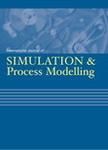版权所有:内蒙古大学图书馆 技术提供:维普资讯• 智图
内蒙古自治区呼和浩特市赛罕区大学西街235号 邮编: 010021

作者机构:School of Computing Informatics and Decision Systems Engineering Arizona State University TempeAZ85287 United States College of Automation Chongqing University of Posts and Telecommunications Chongqing400065 China
出 版 物:《International Journal of Simulation and Process Modelling》 (Int. J. Simul. Process Model.)
年 卷 期:2018年第13卷第6期
页 面:523-536页
核心收录:
学科分类:0710[理学-生物学] 0810[工学-信息与通信工程] 0711[理学-系统科学] 1205[管理学-图书情报与档案管理] 08[工学] 0805[工学-材料科学与工程(可授工学、理学学位)] 0835[工学-软件工程] 0836[工学-生物工程] 0803[工学-光学工程] 0811[工学-控制科学与工程] 0702[理学-物理学] 0812[工学-计算机科学与技术(可授工学、理学学位)]
摘 要:Sparse representation-based approaches are often applied to image fusion. Owing to the difficulties of obtaining a complete and non-redundant dictionary, this paper proposes a hierarchical image fusion framework that applies layer-by-layer deep learning techniques to explore the detailed information of images and extract key information of images for dictionary learning. According to morphological similarities, this paper clusters source image patches into smooth, stochastic, and dominant orientation patch group. High-frequency and low-frequency components of three clustered image-patch groups are fused by max-L1 and L2-norm based weighted average fusion rule respectively. The fused low-frequency and high-frequency components are combined to obtain the final fusion results. The comparison experimentations confirm the feasibility and effectiveness of the proposed image fusion solution. © 2018 Inderscience Enterprises Ltd.